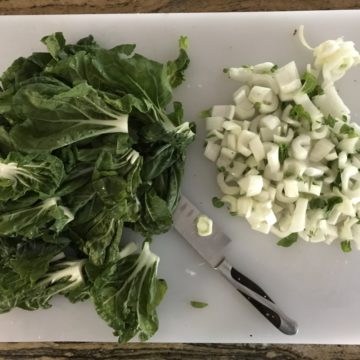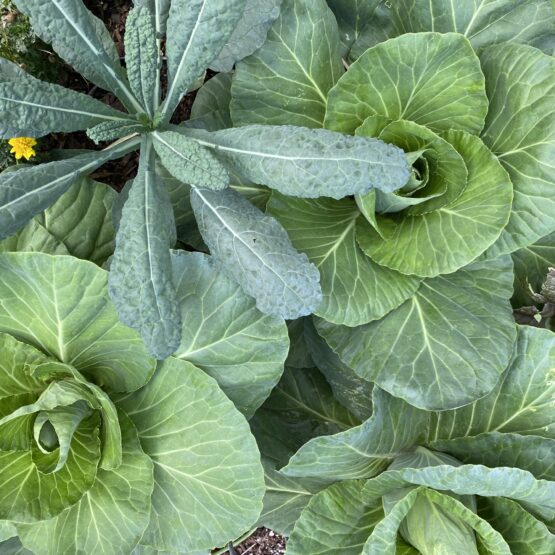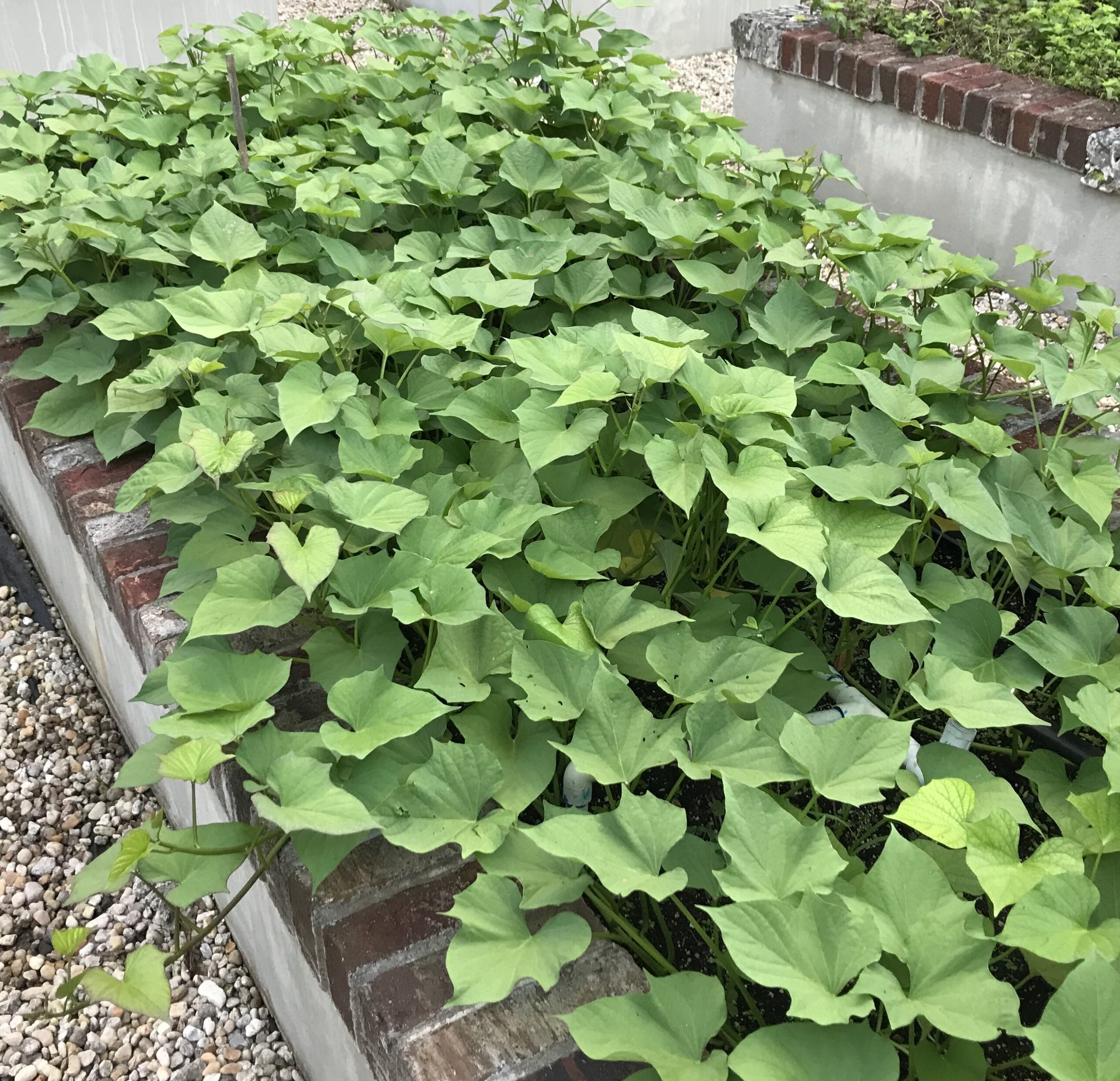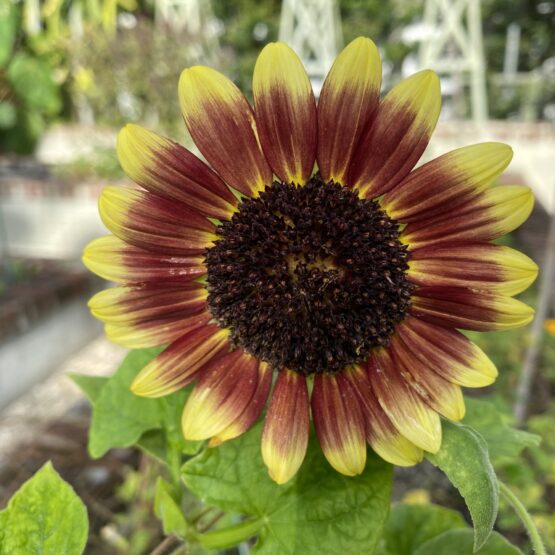I can’t think of a better way to eat bok choy than to saute it with garlic and ginger, add a little salt and heat, and finish it off with toasted sesame oil. It absorbs the aromatics well, and the contrast between the crunchy stems and the tender leaves makes it all the more pleasurable. Garlic and ginger bok choy is an excellent addition to any protein-based Asian dish, e.g., tofu, fish, beef, etc. It provides a “kick” as well as a nutritious boost to any meal.
Bok choy is really a generic name for many varieties of choy, which are readily available not only in our own organic vegetable garden, but in the many Asian markets (and large general grocery stores) across South Florida. I recently purchased a few different kinds at one local market, which were very fresh and inexpensive. See our post “Ode to Choy” for more information about different choys and how we grow them.
Prepping choy for cooking takes a few steps, but it is well worth it and becomes fairly simple once you get the hang of it:
- First, submerge them in a dishpan, shake off the water and drain to remove the first layer of dirt (they come pretty clean from the local stores, and even from our garden).
- Then trim off the root while cutting through the bottom of the outer stems; cut off more of the bottom ends of the stems (along with the dirt that’s left on them).
- Chop the stems into half-inch-or-so wide slices, preferably on a diagonal, up to where the leaves start. The leaves are kept whole unless they are large, in which case they’re cut in half.
- I like to trim the plant down, following the step above, until I get to the small “tips” that are left in the middle, being careful to leave them intact with a few leaves (they are so cute!).
- Lastly, rinse the stems, leaves and “tips” in a clean dishpan of water, and layer them in a salad spinner to spin dry. The reason for layering is so then the stems can be separated from the leaves and tips, and the two piles set aside.
Now you’re ready to prep the aromatics and start cooking! The cleaning process may seem like a lot of work, but again, it becomes simple, like clockwork, once you get into it. And it’s such a joy to cook the stems separately to get a wonderfully multi-textured dish.
A note about cooking oils: it’s important to know which oils have a “high smoking point” when you are sauteing and frying foods. Oils with a low smoking point, if heated to too high a temperature, give off toxic fumes and can become carcinogenic. My two favorite substances for high temperature cooking are rice bran oil (I buy it here: ChefShop.com) and ghee (clarified butter). For medium temperature cooking, my go-to is coconut oil – refined if I don’t want the added coconut flavor. Please see “Smoke Point of Oils for Healthy Cooking” for a chart comparing oils and their health benefits.

- 2 Tb cooking oil (for high heat) See note in blog
- 2 Tb garlic Minced
- 2 Tb ginger Minced
- 1 Pinch red pepper flakes
- 1 1/2 lb small heads of bok choy thoroughly cleaned
- 1/4 cup stock or water chicken or vegetable stock
- 1 tsp tamari or soy sauce
- 1/4 tsp toasted sesame oil
- 1 Tb sesame seeds (optional) toasted
-
Thoroughly wash and prepare the choy (see blog notes). Chop the stems into half inch slices and keep separate. Keep the leaves intact (unless large, then cut in half), and keep the center “tips” intact.
-
Put 2 Tb of cooking oil in a large saute pan over medium high heat, and place the ginger and garlic in the oil before the pan heats up (to keep the aromatics from burning). Saute them while the pan heats. When they have slightly softened, and before they take on any browning color, add the pepper flakes and stir a few seconds.
-
Add the stems of the bok choy to the pan and stir over the medium high heat for a couple of minutes. Add a few Tb of stock or water and allow it to cook off as the stems soften.
-
Add the choy leaves and tips together to the pan. Do this rather quickly in a few batches if necessary. (The leaves will cook down fairly rapidly so there will be room to add more.) Using tongs, stir and turn the choy leaves to cook for a minute. Add a few more Tb of stock or water along with the tamari, and stir well.
-
Continue tossing the choy as it cooks to the desired consistency of soft, bright green leaves and tender stems - neither should be mushy (should only take a few minutes), then turn off the heat. Drizzle the small amount of toasted sesame oil over the choy and stir very well. Serve with a sprinkle of toasted sesame seeds over each serving, if using.




